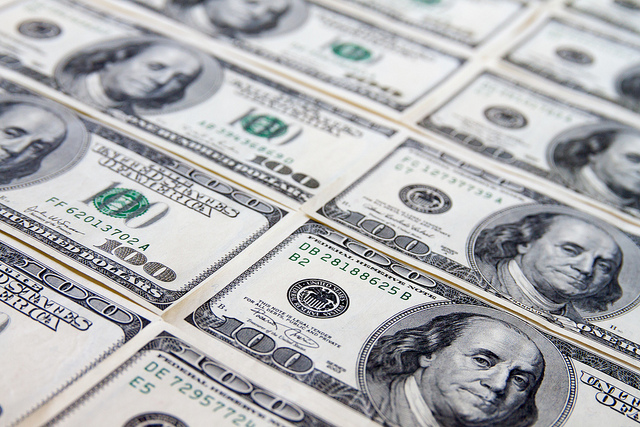Will Dollar Surge Make Fed More Patient?
It’s time to book a trip to Europe! The U.S. dollar surge is grabbing attention, as the greenback soared to a 12-year high against the euro last week. As a reminder, the strength of a country’s currency is a reflection of its overall economic strength. While US growth is not exactly robust, even with its challenges, it is growing faster and is stronger than other developed economies in Europe and Japan. The IMF projects that US growth will exceed 3 percent over the next two years, while the euro area will be mired at less than 1.5 percent. As you might expect, when a currency jumps in value, there are winners and losers. The winners include US consumers, who are likely to eventually see lower costs for some imported clothing, electronics and automobiles. And if you’re planning a European vacation, your dollar will buy you more when you are traveling. Additionally, the economies of Europe and Japan are likely to see a boost from a weaker local currency, as their goods and services become more competitive in the global marketplace.
The losers are U.S. exporters, manufacturers, and companies that derive profits from overseas markets, like Boeing or Coca Cola. Some of these firms will have to adapt their businesses or risk losing market share. A strong dollar could also hurt American tourist attractions, like Disney theme parks and the Grand Canyon, which have been popular destinations for international travelers. If some of these companies get hit hard enough, they could pull back on spending and hiring, which could be a headwind for the overall economy.
The dollar’s surge also poses a potential challenge for Federal Reserve officials, who will convene a two-day policy meeting this week. The central bank has been preparing to increase the short-term interest rates this year, but a stronger dollar has a deflationary effect: as the currency strengthens, a dollar buys more for consumers. A strong dollar may make it hard for Fed officials to reach their 2 percent inflation target and could make the Fed more patient in its outlook for monetary policy.
In case you forgot, the word “patient” is a loaded one for the Fed. In its December 2014 meeting, the central bankers injected “patient” into its statement, saying, “the Committee judges that it can be patient in beginning to normalize the stance of monetary policy.” At the time, analysts at Capital Economics reviewed Fed terminology over the past decade and found that the addition of patient translated into an interest rate increase over the subsequent six to 10 months.
During her recent testimony before Congress, Janet Yellen said that as the economy improves, the Fed would consider raising rates on a “meeting by meeting” basis. But most economists and investors believe that the first step towards policy normalization would be the removal of “patient” from the statement. If that were to occur at this week’s meeting, it could mean that the Fed is preparing for its first rate hike in nine years, at the June FOMC meeting.
MARKETS:
- DJIA: 17,749, down 0.6% on week, down 0.4% YTD
- S&P 500: 2053, down 0.9% on week, down 0.3% YTD
- NASDAQ: 4871 down 0.7% on week, up 2.9% YTD
- Russell 2000: 1232, up 1.2% on week, up 2.3% YTD
- 10-Year Treasury yield: 2.12% (from 2.24% a week ago)
- April Crude Oil: $44.84, down 9.6% on week (Recent low: $44.45 on 1/28)
- April Gold: $1,152.40, down 1% on week
- AAA Nat'l avg for gallon of regular Gas: $2.43 (from $2.45 week ago, $3.52 a year ago)
THE WEEK AHEAD:
Mon 3/16
8:30 Empire State Manufacturing
9:15 Industrial Production
10:00 Housing Market Index
Tues 3/17:
8:30 Housing Starts
Fed Policy meeting (FOMC) begins
Weds 3/18:
2:00 Fed Announcement/Econ Projections
2:30 Janet Yellen Presser
Thurs 3/19:
10:00 Philly Fed Survey
Fri 3/20:

